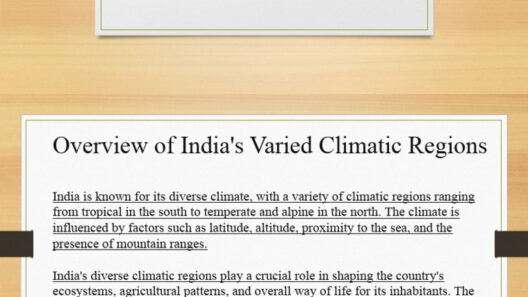Understanding the intricate mechanisms governing Earth’s climate is essential for anyone who wishes to grapple with the pressing challenges of our time. While there are myriad variables at play, three prominent factors stand out as pivotal in shaping the climate: solar radiation, atmospheric composition, and oceanic currents. Each of these elements intertwines harmoniously, functioning like gears in a complex weather engine.
Solar Radiation: The Primary Driver
At the heart of our climate system lies the Sun, an unimaginably vast ball of nuclear fusion emitting energy in the form of solar radiation. This energy travels approximately 93 million miles to reach Earth, where it serves as the foundational input for all weather phenomena. The variation in solar radiation received by different regions leads to temperature gradients that generate atmospheric circulation patterns.
What piques curiosity is the Earth’s axial tilt. This tilt, at an angle of 23.5 degrees, is responsible for the distinct seasons. During summer months, regions tilted towards the Sun bask in more direct sunlight, leading to warmer temperatures and a flourishing of vegetation. Conversely, winter months bring shorter days and diminished sunlight to those same regions, resulting in cooler temperatures. Seasonal variations are an excellent example of how solar radiation orchestrates the dynamics of climate.
Yet, it’s not just the quantity of solar energy that matters; its interaction with Earth’s various surfaces is equally significant. Darker surfaces, such as oceans or forests, absorb more heat than lighter surfaces like ice or deserts, which reflect sunlight back into the atmosphere. This differential heating prompts convective currents, creating local weather patterns like rain showers or droughts. As we contemplate the effects of climate change, the changing surface characteristics of our planet, driven by human activity, raise urgent questions about future climate stability.
Atmospheric Composition: The Gaseous Blanket
The second crucial factor impacting our climate is the composition of Earth’s atmosphere. The atmosphere is a complex mixture of gases, mainly nitrogen and oxygen, but also including vital trace gases such as carbon dioxide (CO2), methane (CH4), and water vapor. These gases have varied roles, with greenhouse gases being particularly significant in regulating temperature.
Greenhouse gases trap outgoing solar radiation, creating a thermal blanket that keeps Earth warmer than it would be otherwise. This natural phenomenon is crucial for life, but anthropogenic activities, such as burning fossil fuels and deforestation, have led to an unprecedented increase in these gases, thickening the atmospheric shield and amplifying the natural greenhouse effect. The resultant imbalance triggers global warming, provoking a cascade of changes in weather patterns.
There is a direct correlation between increased concentrations of greenhouse gases and extreme weather events. For instance, warmer air holds more moisture, leading to intensified rainfall and flooding in some regions, while simultaneously fostering drought conditions in others. The variability of climate induced by changes in atmospheric composition prompts us to rethink our relationship with nature. How can we mitigate our carbon footprint and restore equilibrium to the atmosphere?
Oceanic Currents: The Conveyor Belts of Climate
While solar radiation and atmospheric composition form the bedrock of climate, oceanic currents act as dynamic conveyors of heat and moisture around the globe. These currents, both surface and deep-water, are largely driven by wind patterns, the Earth’s rotation, and differences in water density caused by temperature and salinity variations.
One of the most significant oceanic phenomena, the Gulf Stream, transports warm water from the Gulf of Mexico up the Atlantic coast of North America and across the ocean to Europe. This warm current has a profound effect on the climate of Western Europe, making it significantly milder than other regions at similar latitudes. Understanding ocean currents is crucial, as they not only influence localized weather but also play a role in the global climate system.
Furthermore, oceanic currents are tied intricately to phenomena like El Niño and La Niña, which can wreak havoc on global weather patterns. These oscillations disrupt typical conditions, leading to extreme weather—ranging from droughts to hurricanes. Hence, the ocean, often perceived as a vast and stable entity, is a powerful engine with the potential for dramatic climatic impacts.
Conclusion: Interconnectedness and the Future
The interplay between solar radiation, atmospheric composition, and oceanic currents creates a complex web of climatic influences. Each factor is interconnected, contributing to an ever-evolving climate system that affects ecosystems, human existence, and weather patterns. As we navigate the climate crisis, we must recognize our role in influencing these components. The excesses of industrial activity not only challenge our environment but also endanger the delicate balance of the climate engine.
Ultimately, acknowledging the foundational elements that affect climate is crucial for fostering a greater commitment to environmental stewardship. By understanding these dynamics, individuals and communities can commence a journey towards sustainable living, embracing practices that honor the planet’s health. Only through informed action can we begin to envisage a future that protects our climate and ensures a thriving biosphere for generations to come.







